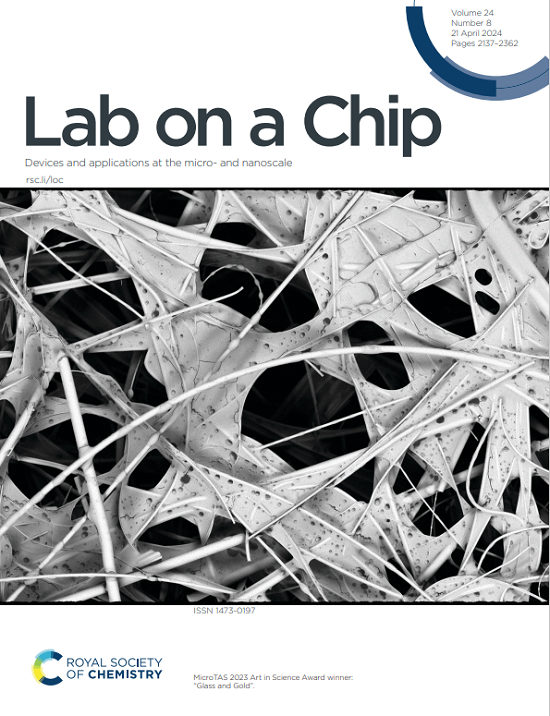利用驻波声流体学实现连续可调液滴分裂
IF 5.4
2区 工程技术
Q1 BIOCHEMICAL RESEARCH METHODS
引用次数: 0
摘要
液滴分裂通过提供对液滴尺寸的精确控制,在液滴微流体中起着重要作用,这对于单细胞分析,生化反应以及微纳米材料的制造等应用至关重要。利用微通道中的障碍物或结进行液滴分裂的传统方法有一个明显的限制,即特定设备的分裂比保持固定,而现有的主动分裂方法要么受到低流速的限制,要么受到它们可以处理的特定类型的液滴的限制。在这项研究中,我们证明了液滴分裂可以简单地使用微通道内激发的一维驻波场来实现。采用理论分析、数值模拟和高速成像等方法研究了液滴分裂的机理。研究发现,当将反差系数为负的液滴放置在压力节点附近时,由于作用于液滴两侧的相反声辐射压力而发生分裂。整个裂解过程可以分为颈缩、全拉伸和裂解三种方式,并且在大约1 ms或更短的时间内完成,证明了在高通量下进行流中液滴裂解的能力。在流速为161µL/min,分裂比相等的条件下,在流速为33.1 ~ 45.1µL/min,分裂比为0.27 ~ 0.7的条件下,成功地进行了连续的液滴分裂。通过液滴分裂和随后的声驱动,实现了选择性和可控的交叉相粒子操纵,从而扩展了液滴微流体在微反应和药物输送中的能力。本文章由计算机程序翻译,如有差异,请以英文原文为准。
Continuous and tunable droplet splitting using standing-wave acoustofluidics
Droplet splitting plays an important role in droplet microfluidics by providing precise control over droplet size, which is essential for applications such as single-cell analysis, biochemical reactions, and the fabrication of micro- and nanosized material. Conventional methods of droplet splitting using obstructions or junctions in the microchannel have a clear limitation that the split ratio for a particular device remains fixed, while existing active splitting methods are either limited by low flow rates or by the specific types of droplets they can handle. In this study, we demonstrate that droplet splitting can be achieved simply using a one-dimensional standing-wave field excited within a microchannel. The mechanism of droplet splitting is investigated using theoretical analysis, numerical simulations, and high-speed imaging. It is found that splitting occurs due to the opposing acoustic radiation pressure acting on the two sides of the droplet, when the droplet with a negative contrast factor was placed near the pressure node. The entire splitting process can be characterized by necking, full-stretch, and splitting regimes, and it is completed in approximately 1 ms or less, demonstrating the capability to perform in-flow droplet splitting at high throughput. Continuous droplet splitting is successfully performed at a flow rate of 161 µL/min with an equal split ratio, and at flow rates between 33.1 and 45.1 µL/min with unequal split ratios ranging from 0.27 to 0.7. Selective and controllable cross-phase particle manipulation is achieved through droplet splitting and subsequent acoustic actuation, thereby extending the capabilities of droplet microfluidics in microreactions and drug delivery.
求助全文
通过发布文献求助,成功后即可免费获取论文全文。
去求助
来源期刊

Lab on a Chip
工程技术-化学综合
CiteScore
11.10
自引率
8.20%
发文量
434
审稿时长
2.6 months
期刊介绍:
Lab on a Chip is the premiere journal that publishes cutting-edge research in the field of miniaturization. By their very nature, microfluidic/nanofluidic/miniaturized systems are at the intersection of disciplines, spanning fundamental research to high-end application, which is reflected by the broad readership of the journal. Lab on a Chip publishes two types of papers on original research: full-length research papers and communications. Papers should demonstrate innovations, which can come from technical advancements or applications addressing pressing needs in globally important areas. The journal also publishes Comments, Reviews, and Perspectives.
 求助内容:
求助内容: 应助结果提醒方式:
应助结果提醒方式:


